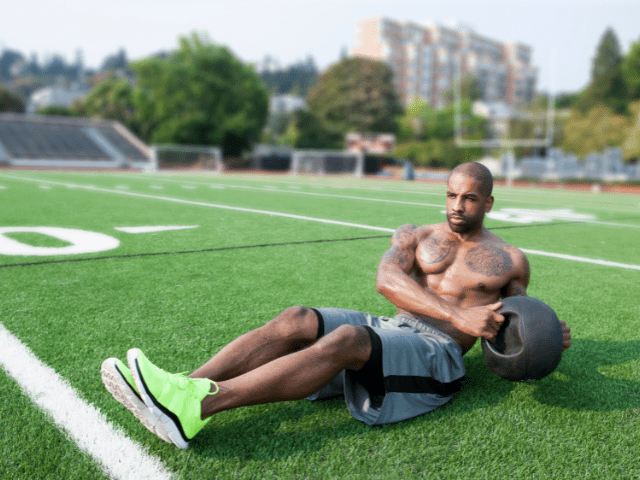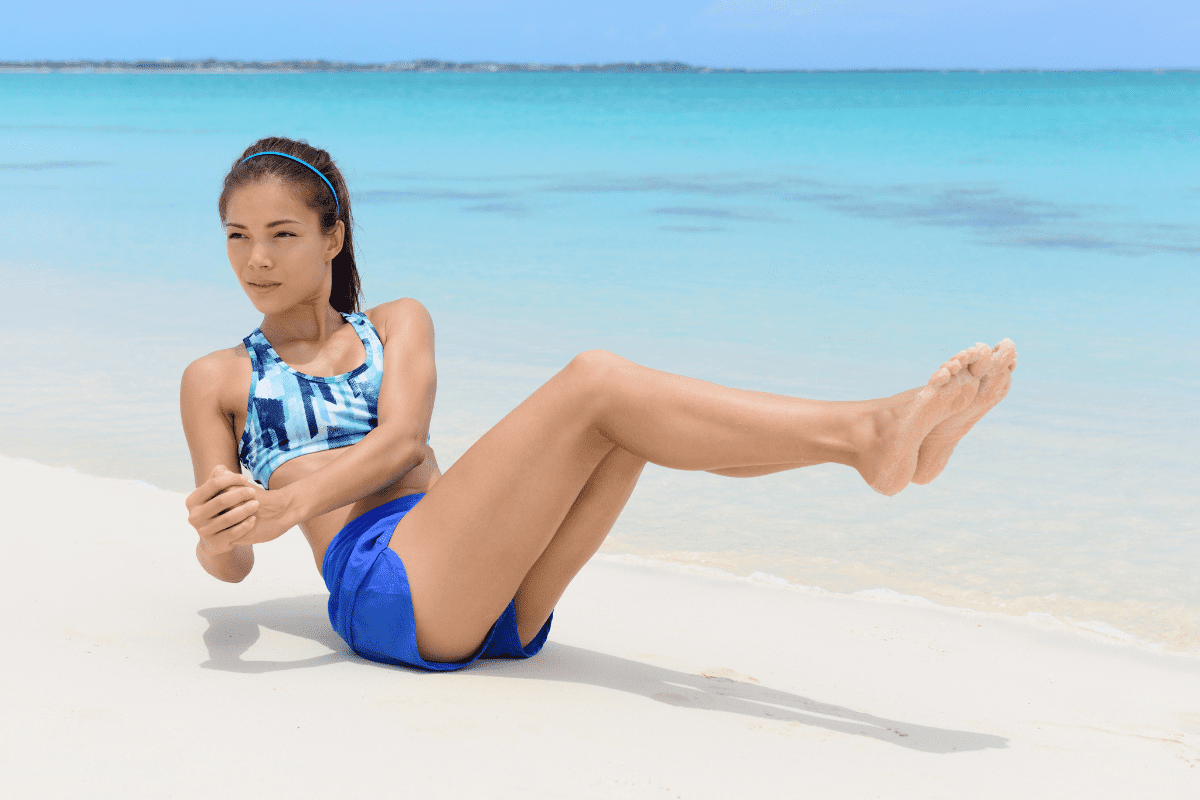Seated Twist (How To, Muscles Worked, Benefits)
Seated Twists are one of my all-time favorite core exercises. Rotational ab movements are often overlooked in my opinion and seated twists are easy to learn, require zero equipment and are super effective.
In this guide I’m going to teach you how to properly perform Seated Twists, explain what muscles they work and give you a few alternatives you can try out.
How To Do Seated Twists
Equipment Needed
- None
Muscles Worked
- Obliques
- Rectus Abdominis
- Secondarily: Shoulders and Upper Back
Step-by-Step Instructions
- Start by taking a seat on the floor and clasping your hands together.
- Slightly bend the knees and raise your feet roughly six inches off the floor.
- Start by rotating your torso to the left, taking your right elbow toward your left knee.
- Now turn your shoulders and rotate your torso to the right, now taking your left elbow toward your right knee.
- Keep legs mostly still and maintain the feet off the floor throughout the movement.
- Continue rotating back and forth until all reps are completed.
Coaching Points (Common Mistakes)
The biggest mistake I see with athletes when doing Seated Twists is moving their hands back and forth instead of rotating through the core. The focus should be on the rotation. What the hands and arms do is merely a product of rotating through the torso.
Benefits of Seated Twists
Seated Twists are a great exercise for strengthening the core muscles, including the obliques and rectus abdominis as well as the shoulders and upper back.
Seated Twists are particularly effective at developing rotational strength which can be especially beneficial for athletes in rotational sports like baseball and tennis.
Seated Twists Variations
If you’re looking to add a little variety to your routine here are a couple of simple variations to mix things up a bit.
Seated Med Ball Twists

If you’re looking for more of a challenge, add a medicine ball to the movement. Seated Med Ball Twists are a great exercise to build a strong core. Keep the movement exactly the same as Seated Twists, but now you can rotate the ball to the ground on each side as you rotate.
Med Ball Twists with Feet on Floor
For beginners, if Seated Twists are a little too difficult, start with placing your feet on the floor. You’ll still get work in for your abs and obliques and once you’re ready you can try to start raising your feet off the floor.
Seated Twist Alternatives
If you can’t do Seated Twists (or just don’t want to) due to an injury, lack of equipment or whatever else – here are a few alternatives you may be able to substitute.
Lateral Bridges
Lateral Bridges are another one of my favorite core exercises that target the obliques. Start in a Side Plank position and then lower your hips down to the ground and drive them back up.
DB Side Bends
If getting down onto the floor is an issue, then DB Side Bends may work as a substitute. You won’t get all the added benefits that holding the seated, feet up position brings, but they are a good exercise to target the Obliques.
Oblique Crunches
If you want to keep things simple you can opt for tried and true Oblique Crunches. Lay on your back, place one foot over the opposite knee and crunch across your body. Simple but effective oblique exercise.
More Links and Info
If you need ideas and/or instructions for more Core Exercises, head over to the Core Section of my Exercise Library.

